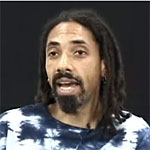Malcolm X’s childhood, “Detroit Red,” and Islam in Black America.
If one had to select one historical personality within the period 1940 to 1975 who best represented and reflected black urban life, politics, and culture in the United States, it would be extremely difficult to find someone more central than the charismatic figure of Malcolm X/El-Hajj Malik El-Shabazz. Born in Omaha, Nebraska, in 1925, and growing up in the Midwest, young Malcolm Little was the child of political activists who supported the militant black nationalist movement of Marcus Garvey. After his father’s violent death and his mother’s subsequent institutionalization due to mental illness, Little was placed in foster care and for a time in a youth detention facility. At age sixteen he left school, relocating to Boston upon the invitation of his older half-sister, Ella Little. During World War II, the zoot-suited “Detroit Red” became a small-time hustler, burglar, and narcotics dealer in Harlem and Roxbury.







 Robin Kelley on Malcolm's relationships with women as a hustler
Robin Kelley on Malcolm's relationships with women as a hustler Peter Bailey on Louise Little's mental health issues
Peter Bailey on Louise Little's mental health issues Farah Griffin on Louise's relationship after Earl Little's death
Farah Griffin on Louise's relationship after Earl Little's death Louis DeCaro on Malcolm's memories of his father, Earl Little, pt. 1
Louis DeCaro on Malcolm's memories of his father, Earl Little, pt. 1